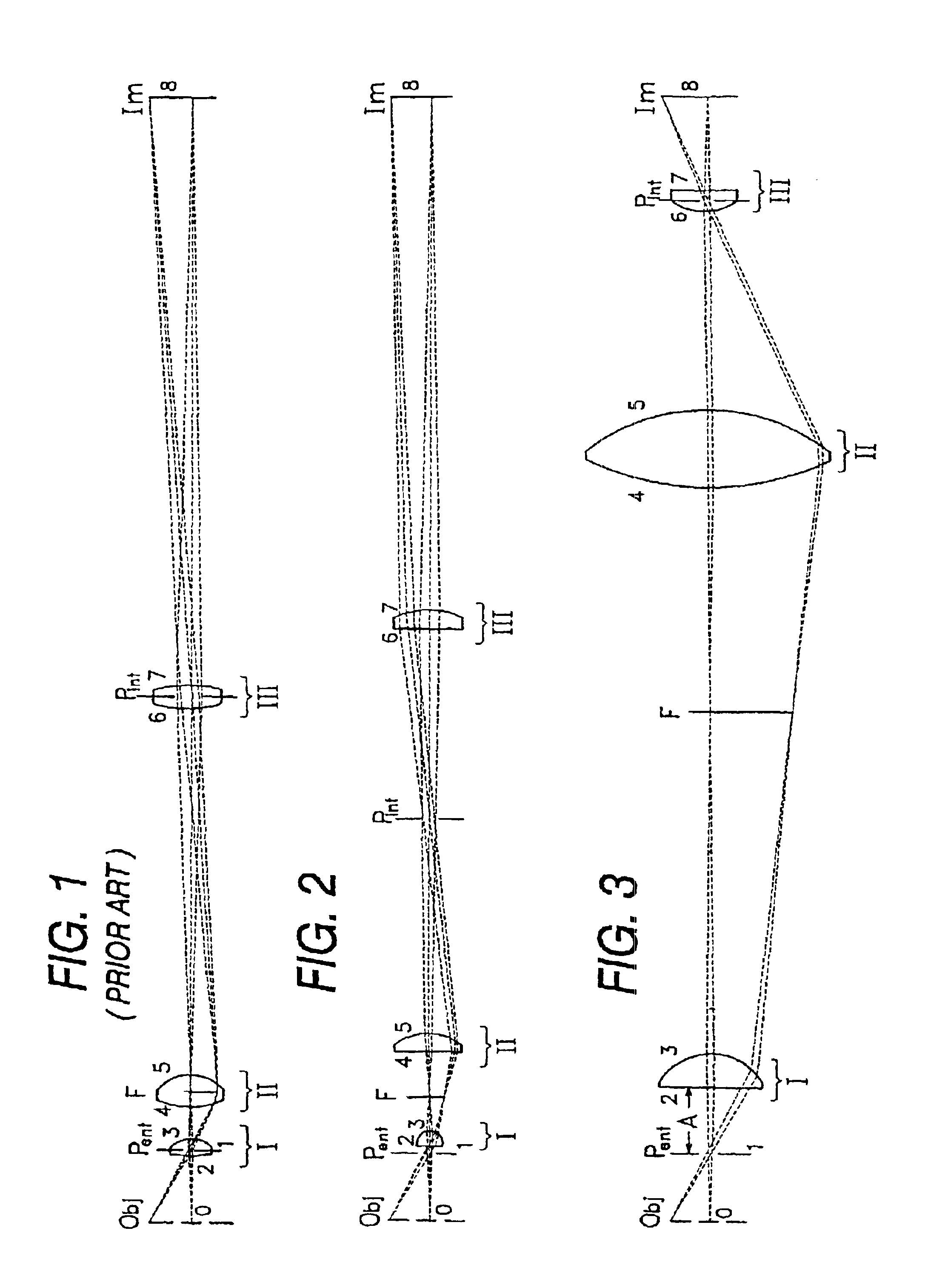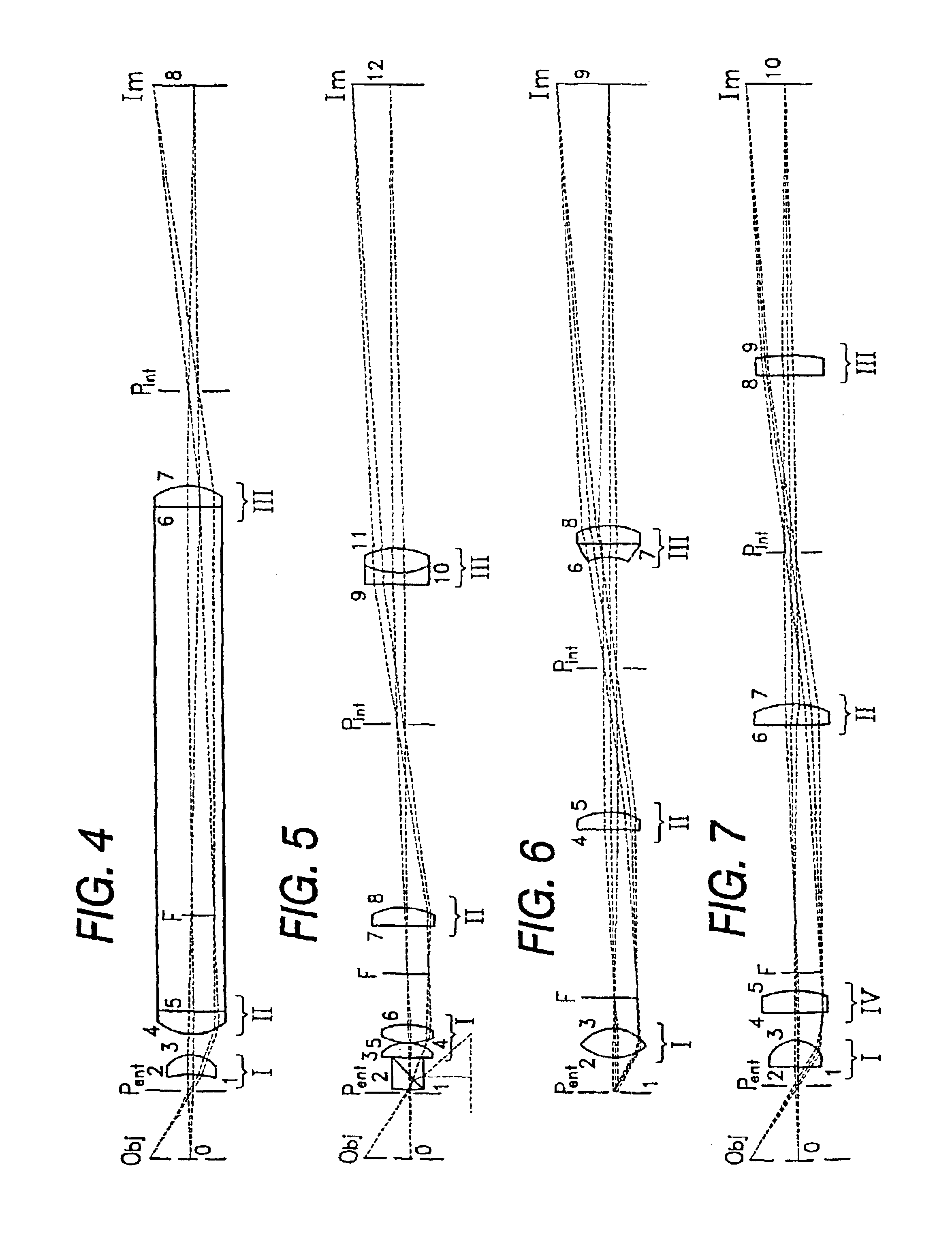Integrated optical system for endoscopes and the like
a technology of endoscopes and integrated optical systems, applied in the field of optical lens systems, can solve the problems of high insensitivity to tilt and decentration of their components, and achieve the effects of reducing the number of elements, facilitating mass production, and long curvature radii
- Summary
- Abstract
- Description
- Claims
- Application Information
AI Technical Summary
Benefits of technology
Problems solved by technology
Method used
Image
Examples
##diments 1-11
Exemplary embodiments 1-11, corresponding to FIGS. 2-12 described below, are standardized such that the objective and the first relay have a length of about 100 millimeters, and most have a nominal magnification of unity. In this way, the performance of Embodiments 1-11 can be conveniently compared. Embodiments with other magnifications, fields of view, numerical apertures, and with additional relays are presented in order to show that the general concept of the invention is effective over a wide range of applications. The embodiments described herein (1-18) use conventional, non-GRIN (gradient refractive index) lens elements, and thus each lens has a uniform refractive index, though other lens types may be used as well.
In FIGS. 1-18, the object and image planes are indicated by an ‘Obj’ and ‘Im,’ respectively. Intermediate focal planes and pupil planes are indicated at various points in the optical train by an ‘F’ and a ‘Pint’, respectively. Optical system features of the object pl...
PUM
 Login to View More
Login to View More Abstract
Description
Claims
Application Information
 Login to View More
Login to View More - R&D
- Intellectual Property
- Life Sciences
- Materials
- Tech Scout
- Unparalleled Data Quality
- Higher Quality Content
- 60% Fewer Hallucinations
Browse by: Latest US Patents, China's latest patents, Technical Efficacy Thesaurus, Application Domain, Technology Topic, Popular Technical Reports.
© 2025 PatSnap. All rights reserved.Legal|Privacy policy|Modern Slavery Act Transparency Statement|Sitemap|About US| Contact US: help@patsnap.com



